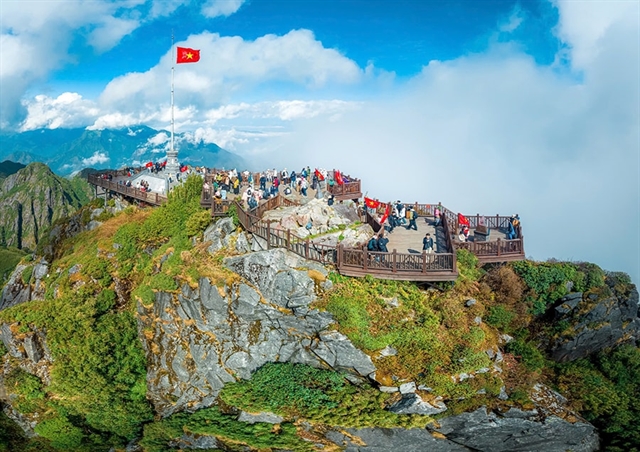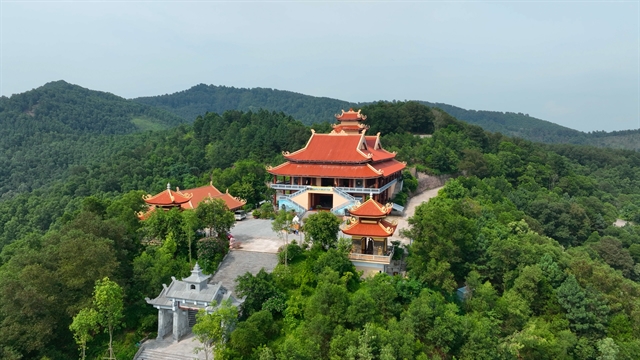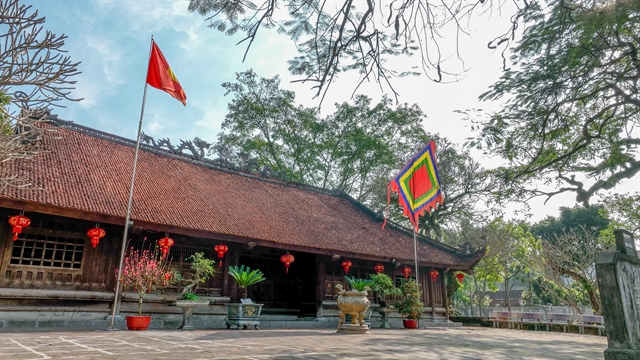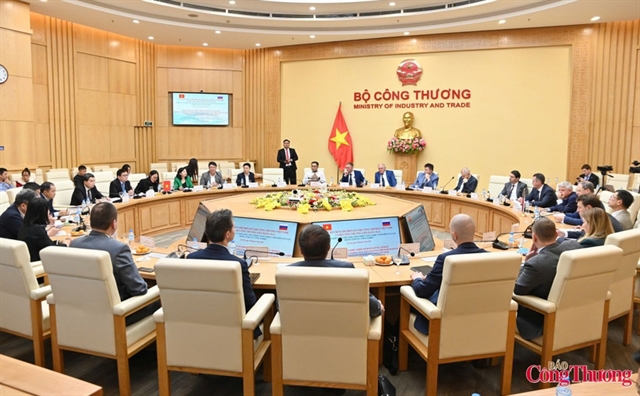 Travel
Travel


|
| Trúc Lâm Phượng Hoàng Zen Monastery in Bắc Giang City. — VNA Photos |
BẮC GIANG — Bắc Giang, a province located in the northern part of Việt Nam, is a province that beautifully melds midland charm with the richness of the northern delta.
Bordered by Lạng Sơn to the north and northeast, and flanked by Hà Nội and Thái Nguyên to the west, it boasts a diverse terrain of plains, heartlands and mountains. This province experiences two distinct seasons, the crisp winters from October to March, alongside the vibrant summers from April to September.
A tapestry of culture and history
Bắc Giang is a treasure trove of stunning landscapes and historical relics, reflecting the deep cultural heritage of Kinh Bắc. The city itself lies just 50km from Hà Nội, accessible via the modern Hà Nội - Bắc Giang expressway and a network of national roads which make travel seamless.
The province is crisscrossed by significant rivers, such as the Cầu, Thương and Lục Nam, enhancing both transport and irrigation for agricultural pursuits, while also serving as scenic backdrops for tourism. With nearly 2,300 historical sites, 593 of which are officially recognised, Bắc Giang is steeped in history. Noteworthy sites include the ancient citadel of Bắc Giang, the Yên Thế peasant uprising relic and the revered Vĩnh Nghiêm Pagoda, home to a UNESCO-recognised woodblock heritage.
Beyond its rich history, Bắc Giang captivates with its breathtaking natural landscapes. The Suối Mỡ scenic area, Cấm Sơn Lake, and Khuôn Thần Lake in Lục Ngạn District offer serene escapes, while the Khe Rỗ primeval forest and Ba Tia Waterfall in Sơn Động District burst with rich biodiversity. These natural wonders are not just beautiful, they are home to numerous rare species, making the province a paradise for eco-tourism and adventure seekers.
Despite its abundant resources and attractions, Bắc Giang's tourism sector faces challenges. The province currently lacks sufficient food, leisure and entertainment services, and its tourism infrastructure requires significant improvement. The industry is characterised by a limited number of low-capacity businesses and the quality of transportation and tourism products is subpar.
To fully harness its potential, Bắc Giang must invest in promoting its unique offerings and developing robust tourism infrastructure. This includes enhancing transportation options, building quality accommodations and training skilled tour guides to elevate the visitor experience.

|
| A location in Hiệp Hòa Safety Zone II has been ranked as a special national monument. |
A vision for the future
The Bắc Giang Provincial Party Committee has laid out an ambitious roadmap for tourism development from 2021 to 2025, with a vision extending to 2030. The goal is to transform tourism into a vital economic sector, linking it with agriculture and other industries to create a thriving value chain for local products.
By 2030, Bắc Giang aims to establish several large-scale provincial tourism and service areas, enhancing its appeal as a national tourist destination. The province is set to welcome at least three million visitors by 2025, generating revenues of VNĐ3 trillion and creating approximately 6,000 jobs. Looking further ahead, it aspires to attract 7.5 million visitors by 2030, with revenues reaching VNĐ7.5 trillion and creating 10,000 jobs.
To achieve these ambitious goals, Bắc Giang is focusing on five key tourism development zones. The Tây Yên Tử tourism space, encompassing parts of Yên Dũng District, Lục Nam, Lục Ngạn and Sơn Động Districts, will emphasise spiritual tourism, eco-tourism, and community engagement, creating a vibrant tapestry of experiences for travellers.
Agricultural eco-tourism, resorts, sports, entertainment and recreation spaces are concentrated in Lục Ngạn, Lục Nam and Lạng Giang Districts in the northeastern area of the province. This development focuses on resort tourism, sports and entertainment linked to the ecological landscapes of lakes and forests, alongside community tourism and eco-tourism featuring specialty fruit orchards.
Tourism spaces associated with the Yên Thế Uprising include Yên Thế District and Tân Yên District in the northwest of the province. The goal here is to develop tourism that matches historical and cultural relics, combining eco-tourism, community tourism, and specialty cuisine.
The Quan họ cultural space, along with ATK history, encompasses Việt Yên Town and Hiệp Hòa District in the southwest area of the province. This initiative aims to develop cultural and artistic tourism, offering visits to relics, temples and pagodas linked to safe zones, as well as craft villages, eco-tourism and sports and entertainment that highlight the ecological landscape interspersed with the plains and hills of the Cầu and Thương Rivers.
Bắc Giang City, including the newly merged Yên Dũng District, serves as a central hub for tourism services, sports, history, spirituality and resorts in the central and southern areas of the province.
Recognising the local potential and strengths, Bắc Giang Province will prioritise the construction and development of four key tourism products: cultural-spiritual tourism, alongside the building, preserving, and developing of existing cultural heritages, with a focus on investing resources to enhance the Tây Yên Tử tourist sites.
According to the Director of the provincial Department of Culture, Sports and Tourism, Trương Quang Hải, by 2025, the Department will continue to collaborate with the Departments of Quảng Ninh and Hải Dương to complete the scientific dossier for 'The Complex of Monuments and Landscapes of Yên Tử - Vĩnh Nghiêm - Côn Sơn, Kiếp Bạc' to submit to UNESCO for recognition as a world heritage site.
Furthermore, the province will continue to effectively implement the Resolution, Project and Plan on tourism development for the period 2021-2025, focusing on consulting solutions to support community tourism development as outlined in Resolution No 41/2023/NQ-HDND, dated July 14, 2023, by the Provincial People's Council.
Deputy Director of the Department of Culture, Sports and Tourism of Bắc Giang, Đỗ Tuấn Khoa, said: “The potential of resources, especially tourism resources in Bắc Giang, is rich and diverse and we believe it possesses a unique identity. The ecological and natural landscapes provide many beautiful and valuable sites.
“The second important issue is cultural resources, particularly tangible and intangible cultural heritage. Bắc Giang is known for preserving many traditional cultural values and unique identities. The province has historical traces of ancient Vietnamese settlements, with thousands of historical and cultural relics spanning various feudal dynasties, all valuable for tourism development.”
Chairman of the Hải Dương Provincial Tourism Association, Nguyễn Minh Xô, said: “Bắc Giang, with its favourable road conditions, is well-positioned for tourism development. Community tourism should be prioritised, given our hills, mountains, and mild climate. Additionally, clean agricultural tourism, particularly with OCOP products like lychee and milk fruit trees, should be developed. We aim to create short, easy-to-understand tours that package these products effectively.”
Nguyễn Thu Hương from Hà Nội Travel Company added: "Ultimately, it's the feedback from visitors that matters. Their experiences and insights about dining, accommodation, and visual attractions are crucial. The story of the thousand-year-old Dã Hương tree, the only one of its kind in the world, is particularly compelling. Visitors want to check in at something truly special." VNS




